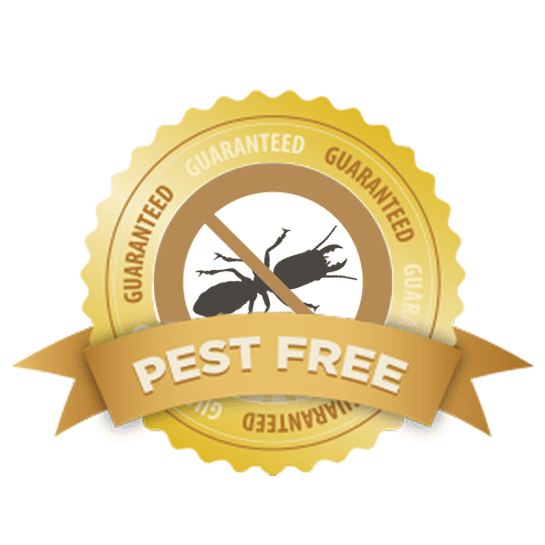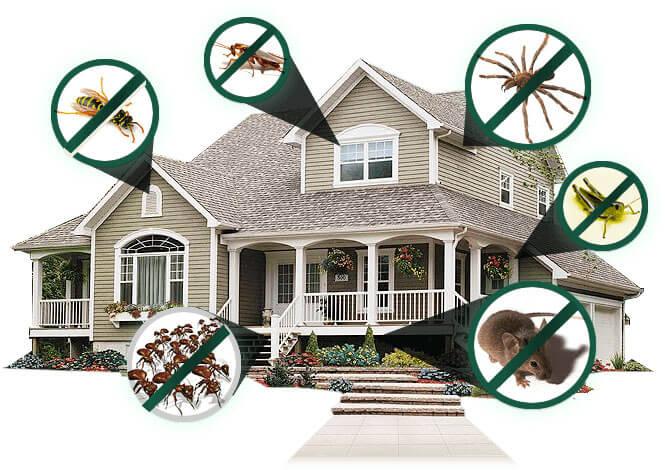Portland Exterminators A1 for Bed Bugs - Trusted Regional Experts
Portland Exterminators A1 for Bed Bugs - Trusted Regional Experts
Blog Article
Reliable Parasite Control Providers: An In-Depth Take A Look At Elimination Techniques and Prevention Actions
In the realm of parasite control services, the effective monitoring of problems needs a thorough method that integrates numerous methods and steps for both removal and avoidance. From Integrated Parasite Administration (IPM) techniques that focus on lasting services to chemical elimination techniques made for targeted removal, the toolbox versus parasites is multifaceted and huge. Organic control methods and physical prevention actions provide alternative paths to successfully combating undesirable intruders. Nonetheless, the secret to a comprehensive parasite control plan lies not just in the techniques themselves, but also in the precise specialist examination procedures that precede and notify them. By understanding the complexities of each technique and how they interplay, one can genuinely realize the complexity and efficiency of modern-day bug control solutions.

Integrated Insect Monitoring (IPM) Strategies
Integrated Parasite Monitoring (IPM) Methods include a detailed technique to pest control that concentrates on avoidance, control, and tracking techniques to efficiently take care of bug populaces. By incorporating numerous strategies, IPM aims to decrease the effect of bugs while likewise reducing the reliance on chemical pesticides. Avoidance exists at the core of IPM, emphasizing practices like appropriate hygiene, maintenance of health, and securing entry points to discourage bugs from infesting buildings. Tracking plays an important function in IPM by routinely inspecting and recognizing bug levels to establish the ideal treatment limits. Control techniques in IPM prioritize making use of physical, biological, and cultural approaches before transforming to chemical treatments as a last hope. These approaches include presenting all-natural killers, habitat adjustment, and using capturing tools to maintain parasite populations in check. In general, IPM fosters a ecologically aware and sustainable strategy to pest monitoring, promoting long-term services that guard both human health and wellness and the ecosystem.
Chemical Elimination Methods
Chemical extermination strategies are frequently utilized in insect control solutions to properly eliminate bug populations that posture a hazard to human health and residential or commercial property. These methods include making use of numerous chemical compounds specifically developed to target and eliminate insects such as insects, rats, and other unwanted animals. The application of pesticides, insecticides, rodenticides, and other chemical agents is meticulously regulated to guarantee optimum effectiveness while decreasing risks to people, family pets, and the setting.
One of the crucial advantages of chemical extermination methods is their capability to offer quick and targeted outcomes, making them particularly useful in instances of serious infestations or immediate bug control demands - a1 pest control in portland oregon bed bugs. Nonetheless, it is important to stress the value of correct handling, application, and disposal of these chemical products to stop unexpected damage
Moreover, incorporated bug administration (IPM) methods usually combine chemical extermination techniques with other methods such as hygiene, habitat alteration, and biological controls to develop a sustainable and detailed insect control method. By including chemical elimination techniques carefully within an IPM framework, insect control solutions can effectively handle parasite populations while lessening prospective dangers to human wellness and the environment.
Biological Bug Control Methods
Utilizing all-natural killers and parasites to manage parasite populations is a lasting method referred to as biological insect control. This approach harnesses the natural systems of the ecosystem to control bug populaces without relying upon synthetic chemicals. One usual organic control technique entails presenting all-natural opponents of the target pest varieties, such as ladybugs for aphid control or nematodes for termite problems. These all-natural killers eat the insects, helping to maintain their populations in check.
An additional reliable biological control approach is making use of microbial insecticides. These are naturally occurring bacteria, such as viruses, fungis, and germs, that particularly target and contaminate specific pest types. By using these microbial agents, bug populaces can be effectively reduced without creating or hurting valuable microorganisms injury to the environment.
Physical Parasite Avoidance Procedures
Carrying out physical click resources insect prevention measures involves making use of obstacles and architectural modifications to prevent bugs from entering or infesting a residential or commercial property. Mounting door moves, displays on windows, and sealing fractures in the foundation can aid prevent pests like pests and rats from gaining gain access to indoors.
Another physical prevention measure is the usage of obstacles like secure fencing to Click This Link keep bigger bugs such as deer or raccoons far from the residential or commercial property. Mounting mesh or cord screens around yards can shield plants from being damaged by parasites. Correct waste monitoring, consisting of safeguarding garbage canisters with tight-fitting lids, is crucial in discouraging insects like raccoons, bugs, and rats. By executing these physical insect prevention actions, property proprietors can significantly lower the threat of pest infestations and the damages they can trigger.
Expert Parasite Inspection Treatments
Carrying out detailed and methodical pest examinations is a basic element of expert insect administration procedures. Professional parasite assessors are educated to meticulously take a look at properties for indications of problems, determining pest species, entrance factors, and favorable problems.

Verdict
Finally, efficient pest control solutions utilize a variety of strategies, consisting of Integrated Pest Monitoring strategies, chemical extermination approaches, biological controls, and physical avoidance steps. Specialist insect evaluation treatments play an essential duty in recognizing and addressing pest concerns in a prompt manner. By executing a combination of these methods, home owners can successfully avoid and handle insect infestations.
From Integrated Pest Management (IPM) techniques that prioritize lasting solutions to chemical extermination techniques made for targeted elimination, the collection against parasites is vast and multifaceted.Integrated Parasite Management (IPM) Approaches include a thorough technique to pest control that focuses on avoidance, tracking, and control techniques to properly handle bug populaces.Chemical elimination strategies are generally utilized in parasite control services to efficiently eliminate insect populaces that pose a danger to human health and home.Utilizing all-natural killers and bloodsuckers to manage parasite populaces is a sustainable approach recognized as biological bug control.In verdict, effective parasite control solutions utilize a range of methods, consisting of Integrated Insect Administration approaches, chemical elimination approaches, biological controls, and physical avoidance measures.
Report this page